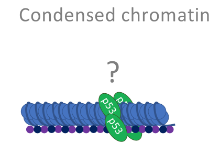Abstract
The p53 transcription factor confers its potent tumor suppressor functions primarily through the regulation of a large network of target genes. The recent explosion of next generation sequencing protocols has enabled the study of the p53 gene regulatory network (GRN) and underlying mechanisms at an unprecedented depth and scale, helping us to understand precisely how p53 controls gene regulation. Here, we discuss our current understanding of where and how p53 binds to DNA and chromatin, its pioneer-like role, and how this affects gene regulation. We provide an overview of the p53 GRN and the direct and indirect mechanisms through which p53 affects gene regulation. In particular, we focus on delineating the ubiquitous and cell type-specific network of regulatory elements that p53 engages; reviewing our understanding of how, where, and when p53 binds to DNA and the mechanisms through which these events regulate transcription. Finally, we discuss the evolution of the p53 GRN and how recent work has revealed remarkable differences between vertebrates, which are of particular importance to cancer researchers using mouse models.
